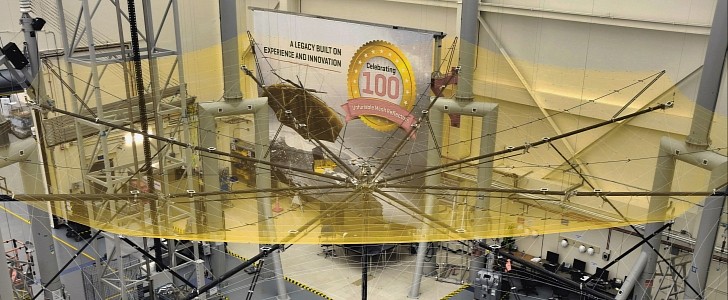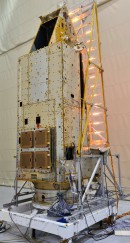Climate change can be tackled from space, too. The European Space Agency (ESA) will soon launch a forest-measuring satellite that will monitor tropical rainforests with the help of a long-wavelength “P-band” radar that’s never been used in space, until now.
ESA’s forest-measuring satellite is called “Biomass,” because it will measure and monitor the biomass level in different types of forest, mainly tropical ones. Forests are essential for life on Earth, because they filter the carbon dioxide in the atmosphere, releasing precious oxygen and storing the carbon. Unfortunately, they are literally dying at an accelerated rate, which leads to the carbon stocks being released, with a negative impact on the environment.
Biomass will carry the first space-born P-band synthetic aperture radar, with P-band described as “the longest radar wavelength available to Earth observation.” This will help measure the level of biomass in forests from space, which is a historic first.
A key component of this satellite is a large reflector measuring 39-foot (12 meters) across, which is mounted on the side of the satellite. When it will be released into orbit, the reflector will open up like an umbrella, receiving the P-band data from the forests on Earth.
The project has recently hit a milestone, with the reflector’s successful testing. The demonstration was conducted by L3Harris Technologies (the component’s manufacturer) in Florida. Representatives from Airbus (who is building the satellite), ESA, and NASA’s Jet Propulsion Laboratory (JPL) also attended the event.
With the help of the first space-born P-band radar and the world’s largest Earth observation reflector, the Biomass satellite will be able to provide forest maps that are incredibly accurate. According to Airbus, such measurements would simply not be obtainable through conventional measurements.
The giant reflector will be sent to the Airbus aerospace facility in Stevenage, UK, by the end of this year, where it will be integrated on the satellite. The Biomass launch is scheduled for 2023, from the European spaceport in French Guiana.
Biomass will carry the first space-born P-band synthetic aperture radar, with P-band described as “the longest radar wavelength available to Earth observation.” This will help measure the level of biomass in forests from space, which is a historic first.
A key component of this satellite is a large reflector measuring 39-foot (12 meters) across, which is mounted on the side of the satellite. When it will be released into orbit, the reflector will open up like an umbrella, receiving the P-band data from the forests on Earth.
The project has recently hit a milestone, with the reflector’s successful testing. The demonstration was conducted by L3Harris Technologies (the component’s manufacturer) in Florida. Representatives from Airbus (who is building the satellite), ESA, and NASA’s Jet Propulsion Laboratory (JPL) also attended the event.
With the help of the first space-born P-band radar and the world’s largest Earth observation reflector, the Biomass satellite will be able to provide forest maps that are incredibly accurate. According to Airbus, such measurements would simply not be obtainable through conventional measurements.
The giant reflector will be sent to the Airbus aerospace facility in Stevenage, UK, by the end of this year, where it will be integrated on the satellite. The Biomass launch is scheduled for 2023, from the European spaceport in French Guiana.
?Successful deployment of giant 12 metre umbrella-like reflector for @esa forest monitoring satellite ???? Biomass will enable precise measurement of carbon stored in global forests ????????????
— Airbus Space (@AirbusSpace) October 21, 2021
Read more:https://t.co/ujIKn2yELF#SpaceMatters pic.twitter.com/FUOIpD8UJi






